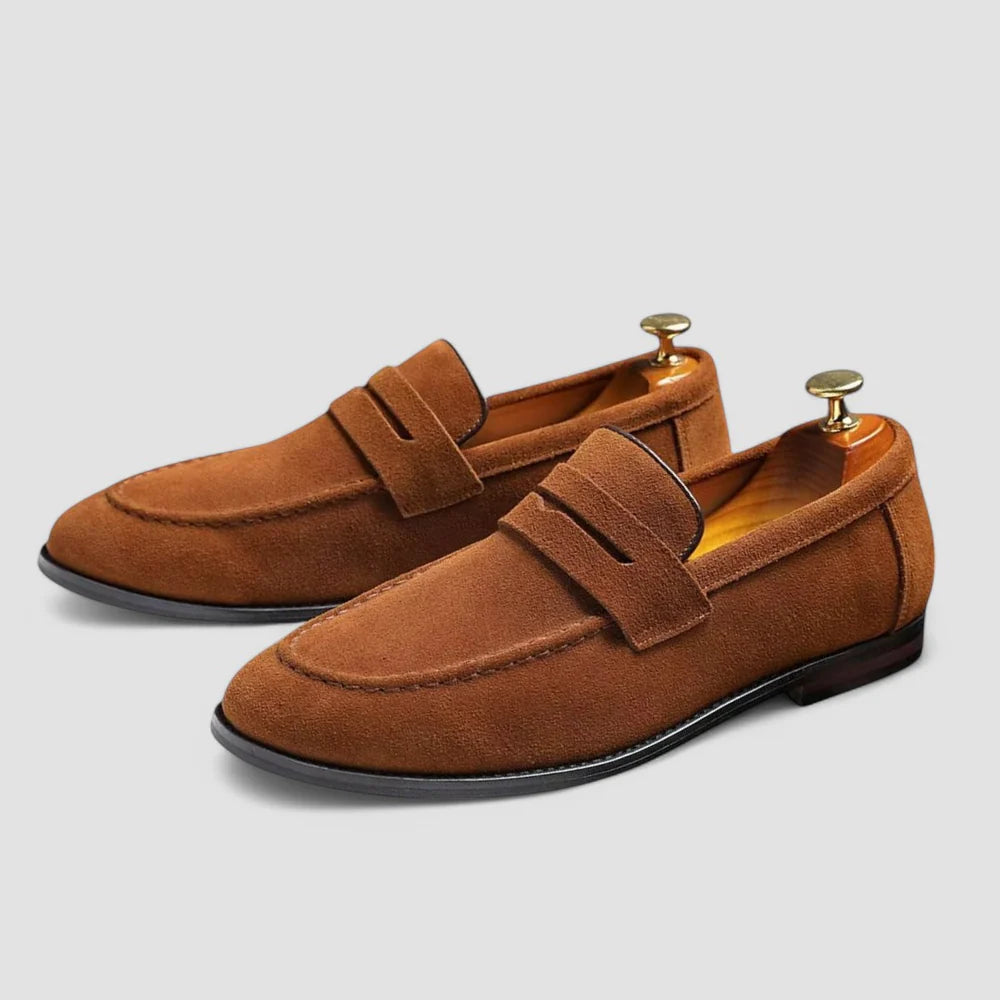



The Different types of English Shoes
At Harrington Leather Works, sharing the story behind my shoes is part of the experience.
I take real pride in helping our customers understand the details — the why and how behind every boot and loafer. Step into my store and you’ll find more than shelves of leather shoes. You’ll meet people who genuinely know and love what they do — and who are always happy to chat about what makes a truly great pair.
Not quite ready to dive into the details just yet? No worries — my Style Guide is here to give you a head start.
Learn what sets a Derby apart from a Monk, or how a Saddle Loafer differs from a Penny. We can only scratch the surface, of course — the world of classic men’s shoes runs deep, and that’s exactly what makes it so interesting.
— Edward Harrington, Founder

With American roots and connections to the original moccasin, Loafers have grown from strength to strength over recent years. Another ‘no lacing’ option, Loafers are the most casual style available from a Goodyear-welted shoemaker such as Harrington Leather Works. They are commonly produced in both ‘Lined’ and ‘Unlined’ forms.

The most easily recognisable of all classic styles, is the elegant English Oxford. A formal style that dates back over two hundred years, it is thought to have been named by the students at Oxford University, although it is almost certain that the style predates this ‘naming’ further still. The sequence of operations for constructing an Oxford differs to a Derby.

Said to have been developed by an alpine monk in the 15th century, and worn throughout European monasteries, this style was popularised in the 1920s. Unbeknown to many, a Monk strap style hosts similar fitting qualities and construction to a Derby. You could think of a Monk style as a ‘modern day’ Derby, of sorts. With open quarters, and a whole cut vamp and tongue, Monk straps (single and double buckle) are remarkably comfortable on the foot. However, they will not offer the same level of adjustment, due to the absence of laces. The sequence of operations for constructing a Monk is similar to a Derby.

Said to have been developed by an alpine monk in the 15th century, and worn throughout European monasteries, this style was popularised in the 1920s. Unbeknown to many, a Monk strap style hosts similar fitting qualities and construction to a Derby. You could think of a Monk style as a ‘modern day’ Derby, of sorts. With open quarters, and a whole cut vamp and tongue, Monk straps (single and double buckle) are remarkably comfortable on the foot. However, they will not offer the same level of adjustment, due to the absence of laces. The sequence of operations for constructing a Monk is similar to a Derby.

The most popular of all the boot styles, a Derby boot is a fully lined, high leg and all together, more substantial boot than most. More often than not, featuring a Dainite or chunky rubber sole with variations similar to a Derby shoe. With historical references to Commando and Officers boots, the plain-front and Cap Derby boots are by far the most recognisable styles. Suitable for the colder Winter months.

An illustrious past has portrayed the Chelsea boot in various lights along the way. The origin of the name is a matter of debate, but these elastic sided boots date back to the mid-1800s. With strong last development, Harrington Leather Works is able to produce a selection of Chelsea boots ranging from smart and elegant to casual country styling. Expert pattern cutting, and shoemaking of the highest order, means Crockett & Jones makes some of the finest Chelsea boots on offer today.

It is believed that a Chukka boot has both a sporting and a military heritage. A Chukka boot (or Desert boot) is constructed using three pieces of outer material – Inside Quarter, Outside Quarter and Vamp with low cut leg (but above the ankle) and two to three eyelets.

These soft, unstructured and ultra-comfortable loafers / moccasins were made famous by the Italians in the 1960s. If made with care and by an experienced hand, a car shoe or driving shoe will last you well. They are typically adorned during the warm summer months, and are often available in bright colours and soft suedes.

Regardless of the occasion or footwear requirements, our approach to fit always has our customers in mind.